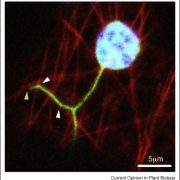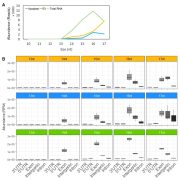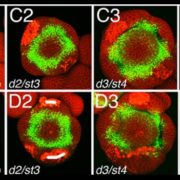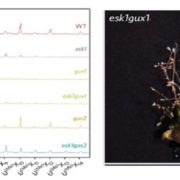Review. Katanin: A sword that cuts microtubules for cellular, developmental, and physiological purposes
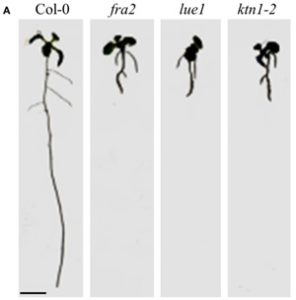 KATANIN is a AAA ATPase protein which, according to the most recent models, is able to track along microtubules (MTs) and sever emergent γ-TUBULIN and AUGMIN-nucleated MTs. This severing event occurs at MT cross-over areas, particularly where there are MT lattice defects, promoting disassembly of unfavorable MT orientation and mediating MT reorientation. Inducible overexpression of KATANIN results in heavy fragmentation of cortical MTs and favors MT bundling in Arabidopsis pavement cells. Many KATANIN mutants have been identified with diverse names. The first described mutant, bot1-1, had altered cortical MT organization and cell elongation leading to swollen cells and round, thick leaves and stems. Conversely, the fragile fiber 2 (fra2) mutant displayed widespread organ fragility and reduced cellulose deposition resulting in plants with pleiotropic phenotypes. A common feature of KATANIN mutants seems to be issues with fertility, as seen in both fra2 and ktn1-2 mutants which had siliques with unfertilized ovules and reduced seed set. Also, mutants typically have mitotic defects in which the spindle formation is unaltered but its positioning is deregulated, resulting in altered cell division plane orientation. Interestingly, KATANIN transcript accumulation can be induced by the hormones gibberellin, auxin, and ethylene while KATANIN itself can induce the expression of proteins important for modulating abiotic stress response. Learning more about KATANIN can help us comprehend how external stimuli result in molecular changes and coordination of cell growth in addition to adding to our knowledge of plant mitotic cell division. (Summary by Alecia Biel) Front Plant Sci. 10.3389/fpls.2017.01982.
KATANIN is a AAA ATPase protein which, according to the most recent models, is able to track along microtubules (MTs) and sever emergent γ-TUBULIN and AUGMIN-nucleated MTs. This severing event occurs at MT cross-over areas, particularly where there are MT lattice defects, promoting disassembly of unfavorable MT orientation and mediating MT reorientation. Inducible overexpression of KATANIN results in heavy fragmentation of cortical MTs and favors MT bundling in Arabidopsis pavement cells. Many KATANIN mutants have been identified with diverse names. The first described mutant, bot1-1, had altered cortical MT organization and cell elongation leading to swollen cells and round, thick leaves and stems. Conversely, the fragile fiber 2 (fra2) mutant displayed widespread organ fragility and reduced cellulose deposition resulting in plants with pleiotropic phenotypes. A common feature of KATANIN mutants seems to be issues with fertility, as seen in both fra2 and ktn1-2 mutants which had siliques with unfertilized ovules and reduced seed set. Also, mutants typically have mitotic defects in which the spindle formation is unaltered but its positioning is deregulated, resulting in altered cell division plane orientation. Interestingly, KATANIN transcript accumulation can be induced by the hormones gibberellin, auxin, and ethylene while KATANIN itself can induce the expression of proteins important for modulating abiotic stress response. Learning more about KATANIN can help us comprehend how external stimuli result in molecular changes and coordination of cell growth in addition to adding to our knowledge of plant mitotic cell division. (Summary by Alecia Biel) Front Plant Sci. 10.3389/fpls.2017.01982.


